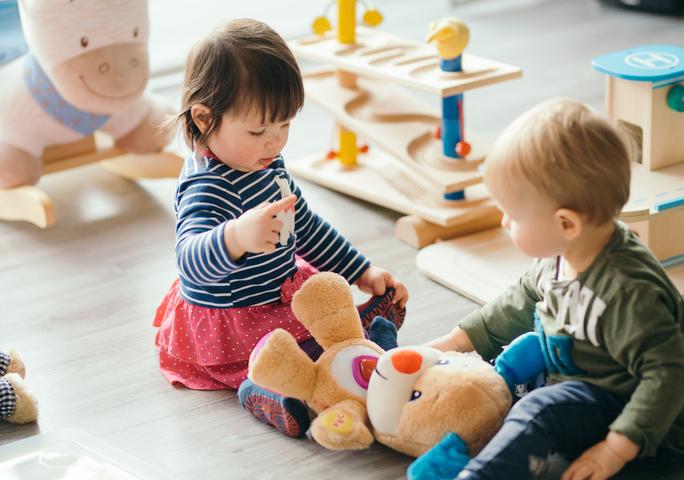Collectors purchase approximately 15% of all toys, representing a multibillion-dollar subset of a large and growing market.
Even though an adult may deny that their rare action figure is a toy, regulators have their own guidelines to distinguish between toys and collectibles. A product primarily intended for use by adults can still be classified as a toy in certain countries. Inadequate inspection measures or failing to test to children’s protocol can delay the export of collectibles into a country or region, having a detrimental impact on an organization’s bottom line.
Regulators consider multiple factors when determining whether a product is a toy or a collectible exempt from testing to children’s protocol.
Play Value
Play value, as the name suggests, is the likelihood that a child will see value in playing with a product. In order for a product to be classified as a collectible, it must have minimal play value.
Different regions and countries have their own standards for what constitutes minimal play value. In Europe, a product with detail and intricacy is not considered something with play value. Examples include a detailed scale model of a military tank. A child is unlikely to spend time following complex instructions only to build something that they cannot play with.
In the USA, it is likely that the same model tank would not fall under the scope of the ATSM F963, the American Toy Safety Standard. However, if it had doors that opened and closed or wheels that rolled, it could offer play value, necessitating child safety testing. If the same model tank were fixed to a base, it would not offer much if any play value.
Even if you were aware of this legislation and tried to cut down on moving components and detachable parts, quality control issues could arise. You would need to ensure that the glue that you used was strong enough, ensuring that the door would become easily detached. You would also have to run chemical tests to ensure that the glue was safe for children.
However, you cannot afford to wait until 100% of your goods are produced—at the Pre-Shipment Inspection (PSI) stage—before detecting that the door gets detached or that the glue is not safe for children. At this point, it would either be too late or very costly to take corrective measures.
Regulators will often mandate that you enlist the services of a Third Party Inspector (TPI). In addition to testing services, TPIs provide inspection services to ensure that there are no critical defects in your goods. TPIs do this by offering Initial Product Checks (IPIs) and During Product Inspections (DUPROs) earlier in the production cycle.
This gives you enough time to troubleshoot any defects and non-conformances that you identify before you are stuck with inventory that is too unsafe to ship.
Price Point and Distribution Methods
In America and Europe alike, a product’s price point can help determine whether it is a collectible or a toy. Collectibles tend to be considerably more expensive, reducing the likelihood that parents would purchase them for their children.
The target audience of the packaging and advertising is another crucial factor. In Europe, for example, if the product or packaging bears a visible and legible statement that it is intended for collectors aged 14 and above, it might not need to be tested to children’s protocol. This message should be repeated in any advertisements, especially if the product is advertised through mass media such as the Internet or television.
The location where the product is distributed is also an indication of whether it is a children’s product or an adult collectible. Whereas toys are usually sold in toy shops and department stores, collector's items are usually distributed either online or in specialty stores. If sales forecasts determine that a collectible will have higher sales in a toy shop, they may have to test their products to children’s protocol.
Gray Areas
Even if a product is expensive and is sold in a specialty store, it may have to undergo child safety testing if it has high play value. A regulator’s final decision takes into account a variety of factors in addition to price point and distribution methods.
Imagine that you produce key chains made of plush material, featuring animal characters. The key chains are expensive, clearly labeled as a collector’s item, and are sold in specialty stores. Surely they would not have to be tested to kid children’s protocol, right?
The answer is not so simple. Animal characters can appeal to children and therefore be considered to have play value. For instance, a parent might give the key chain to an infant to keep them entertained.
It is foreseeable that these key chains would have to comply with standards such as ATSM F963 prior to export. This would include meeting the limits for lead in substrate and surface coatings and following tracking label requirements.
Quite often the key chains may be required to undergo a mandatory third party inspection. Even if they aren’t mandatory, TPIs can stop goods that aren’t childfriendly from being shipped out, reducing the cost of recalls and protecting your brand’s reputation for safety.
In addition to IPI and DUPRO, TPIs also carry out a Raw Materials Incoming Check. In the case of collectibles that are classified as toys, this can ensure that dangerous chemicals like lead can be detected before production is complete. This makes it cheaper to change course and source compliant raw materials for subsequent units that are produced.
Ensuring that your collectibles are ready to ship can be a complicated process. With over 30 years of testing, inspection, and certification experience with toys and hard goods, Bureau Veritas is perfectly positioned to ensure that you are meeting both regulatory requirements and quality specifications. For more details, head to our InSpec by BV website.
